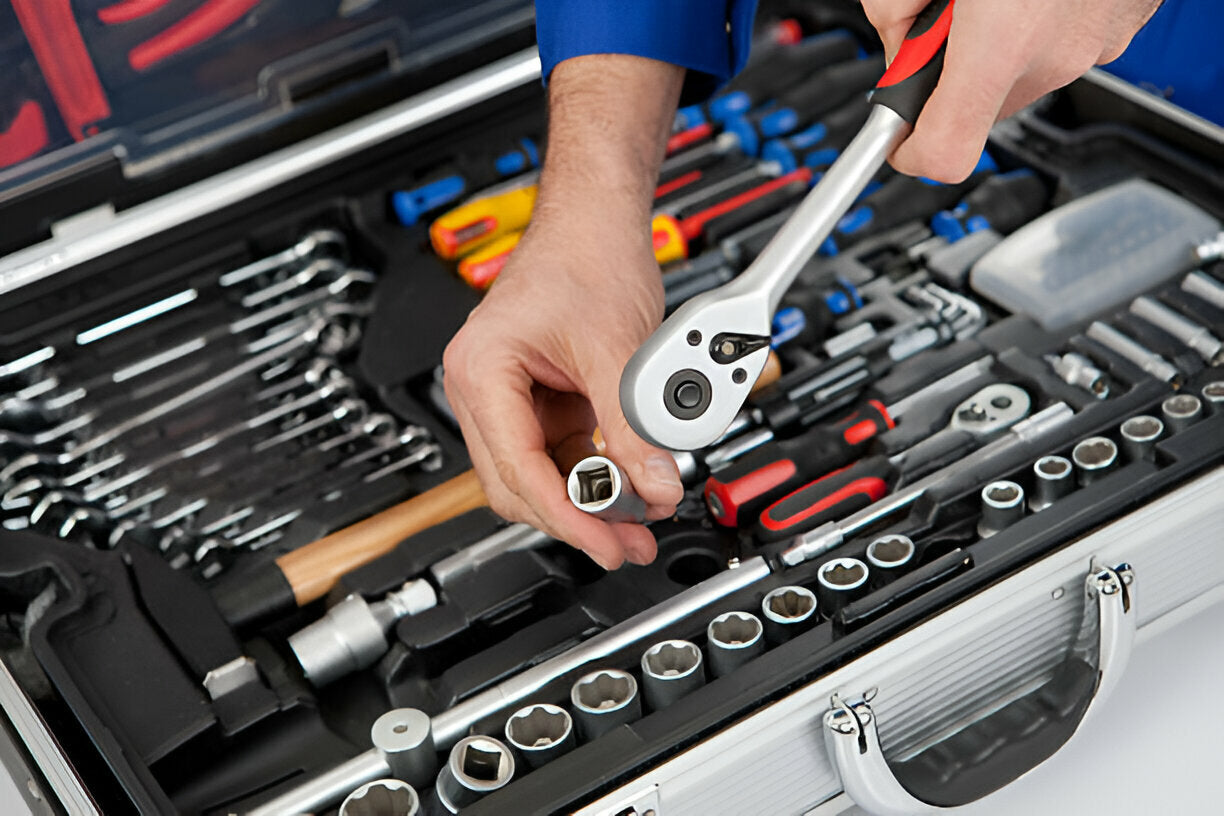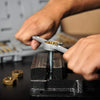
The Evolution of Automotive Tools: A Historical Perspective
In the world of automotive repair and maintenance, the tools used have evolved significantly over the years. From the humble beginnings of early hand tools to the cutting-edge technology of modern diagnostics equipment, the history of automotive tools is a fascinating journey of innovation and progress. Let's discover how automotive tools have shaped the way we maintain, repair, and improve vehicles, ultimately revolutionizing the way we interact with automobiles.
Introduction to the History of Automotive Tools
The history of automotive tools is intertwined with the evolution of automobiles themselves. As vehicles became more complex and sophisticated, the need for specialized tools to repair and maintain them grew. This section will provide an overview of the early years of automotive tools, highlighting the key factors that contributed to their development.
First Generation of Automotive Tools
The early years of automotive tools can be traced back to the late 19th century when automobiles were first introduced to the market. During this time, vehicles were relatively simple, consisting of basic mechanical components. As a result, the tools used for automobile repair were also straightforward and primarily consisted of hand tools such as wrenches, screwdrivers, and pliers. These tools were essential for basic repairs and adjustments and were typically owned by automobile owners themselves.
Impact of Industrial Revolution on Tool Development
The industrial revolution, which spanned from the late 18th to the early 19th century, played a significant role in shaping the development of automotive tools. This era brought about advancements in manufacturing techniques, leading to the mass production of tools and equipment. As a result, tools became more affordable and accessible, allowing for the widespread use and availability of automotive tools.
Key Innovations in Early Automotive Tools
During the early years of automotive tool development, several key innovations emerged that revolutionized the way automobiles were repaired and maintained. One notable innovation was the introduction of the socket wrench, which allowed for faster and more efficient tightening and loosening of nuts and bolts. Another important development was the creation of specialized tools for specific tasks, such as spark plug wrenches, valve spring compressors, and brake adjustment tools. These innovations increased the precision and effectiveness of automotive repairs, ultimately improving the functionality and reliability of vehicles.
As the automotive industry expanded and technology advanced, the need for more advanced tools became apparent. The mid-20th century marked a significant turning point in the evolution of automotive tools, with the advent of new technologies and increased automation. In the next section, we will explore the changes and improvements that occurred during this period, shaping the landscape of automotive tools as we know it today.
The Early Years of Automotive Tools
The early years of automotive tools were marked by a period of experimentation and adaptation as the automobile industry was in its nascent stages. This section will delve into the developments and challenges faced during this era, highlighting the first generation of automotive tools and their significance.
First Generation of Automotive Tools
During the late 19th and early 20th centuries, automobiles were a novelty, and the tools used for their repair and maintenance were relatively basic. As mentioned earlier, hand tools such as wrenches, screwdrivers, and pliers were the primary tools used during this time. These tools were versatile and suitable for a wide range of tasks, including loosening and tightening nuts, adjusting components, and making minor repairs.
However, the early automotive tools lacked the specialization required for more intricate repairs and maintenance. As the complexity of automobiles increased, the demand for specialized tools grew. Consequently, manufacturers and mechanics began developing innovative tools tailored to the unique needs of the emerging automotive industry.
Impact of Industrial Revolution on Tool Development
The industrial revolution played a vital role in shaping the early years of automotive tools. The advancements in manufacturing techniques and the mass production of tools during this period made them more accessible and affordable. This accessibility allowed for the widespread use of tools in both professional repair shops and by vehicle owners themselves.
Furthermore, the industrial revolution also influenced the materials used in tool manufacturing. Traditional hand tools made of wood and forged metals gave way to more durable and efficient materials, such as steel and alloys. These advancements in material technology improved the longevity and reliability of automotive tools, enabling them to withstand the demands of repairing and maintaining automobiles.
Key Innovations in Early Automotive Tools
As the automotive industry progressed, so did the innovation and development of specialized tools. Several key innovations emerged during this era, revolutionizing the way automobiles were repaired and maintained:
- Socket Wrench: The introduction of the socket wrench allowed for faster and more efficient tightening and loosening of nuts and bolts. This tool, equipped with interchangeable sockets, provided a versatile solution for various sizes and types of fasteners.
- Specialized Tools: To address the unique needs of automobile repair, specialized tools were created. Spark plug wrenches, valve spring compressors, and brake adjustment tools were among the first specialized tools that made specific tasks easier and more precise.
- Engine Compression Tester: With the increased complexity of engines, the engine compression tester was developed. This tool allowed mechanics to measure the compression within the engine cylinders, diagnosing potential issues and ensuring optimal engine performance.
These early innovations paved the way for more advanced tool development in the years to come. In the next section, we will explore the mid-20th century, a period of significant changes and improvements in automotive tools, driven by post-war transformations and the rise of automation.
Automotive Tools in the Mid-20th Century
The mid-20th century marked a significant period in the evolution of automotive tools. With the end of World War II and the subsequent post-war boom, the automotive industry experienced unprecedented growth and transformation. This section will explore the changes and improvements that occurred during this era, highlighting the advancements in automotive tools and their impact on the industry.
Post-war Changes and Improvements in Automotive Tools
Following the end of World War II, the automotive industry underwent significant changes. The demand for vehicles increased as people sought mobility and economic prosperity. This surge in demand led to advancements in automotive technology and, consequently, the need for more advanced tools.
During this time, tool manufacturers focused on improving tool quality, durability, and efficiency. Tools were designed to withstand the demands of heavy usage in repair shops and garages. Materials such as high-grade steel and alloys were used to create stronger and more durable tools, ensuring they could withstand the rigors of automotive repair.
Additionally, the post-war period brought about improvements in ergonomic design. Tools were redesigned to be more comfortable to handle, reducing strain and fatigue on mechanics during prolonged use. This focus on ergonomics enhanced the overall efficiency and productivity of automotive repair.
Rise of Automation and its Effect on Tool Development
The mid-20th century witnessed a significant shift in the automotive industry with the rise of automation and the introduction of assembly lines. This shift, spearheaded by companies like Ford and General Motors, brought about mass production and increased efficiency in vehicle manufacturing.
The advent of automation had a profound impact on tool development. As production became more streamlined, the need for specialized tools to aid in assembly line work arose. Tools such as pneumatic drills, torque wrenches, and electric screwdrivers were developed to enhance efficiency and accuracy in the manufacturing process.
Furthermore, automation also influenced the repair and maintenance side of the industry. As vehicles became more complex, specialized diagnostic tools were introduced to identify and rectify issues. Electrical testers, engine analyzers, and diagnostic scanners became essential tools in diagnosing and repairing the intricate electrical and mechanical systems of vehicles.
Related Article: Automotive Tool Reviews: Expert Reviews and Recommendations
Notable Automotive Tool Innovations in the Mid-20th Century
The mid-20th century witnessed several notable innovations in automotive tools that significantly impacted the industry. Some of these innovations included:
- Hydraulic Lifts: The introduction of hydraulic lifts revolutionized the way vehicles were lifted and accessed for repair and maintenance. These lifts provided a safer and more efficient alternative to traditional methods like using jacks and ramps, allowing mechanics to work comfortably and access all areas of the vehicle.
- Impact Wrenches: Impact wrenches, powered by compressed air or electricity, were introduced to tackle stubborn and tightly fastened bolts. These high-torque tools provided a significant advantage in terms of speed and efficiency, reducing the time required for certain repair tasks.
- Diagnostic Equipment: The development of advanced diagnostic equipment, such as engine analyzers and oscilloscopes, allowed mechanics to accurately diagnose engine and electrical issues. These tools helped identify problems quickly, leading to more efficient repairs and minimizing vehicle downtime.
The advancements in automotive tools during the mid-20th century set the stage for further innovation and progress in the years to come. In the next section, we will explore the modern evolution of automotive tools, driven by the influence of technology and recent developments in the industry.
Related Article: The Comprehensive Guide to Automotive Tool Brands: Who Makes the Best?



